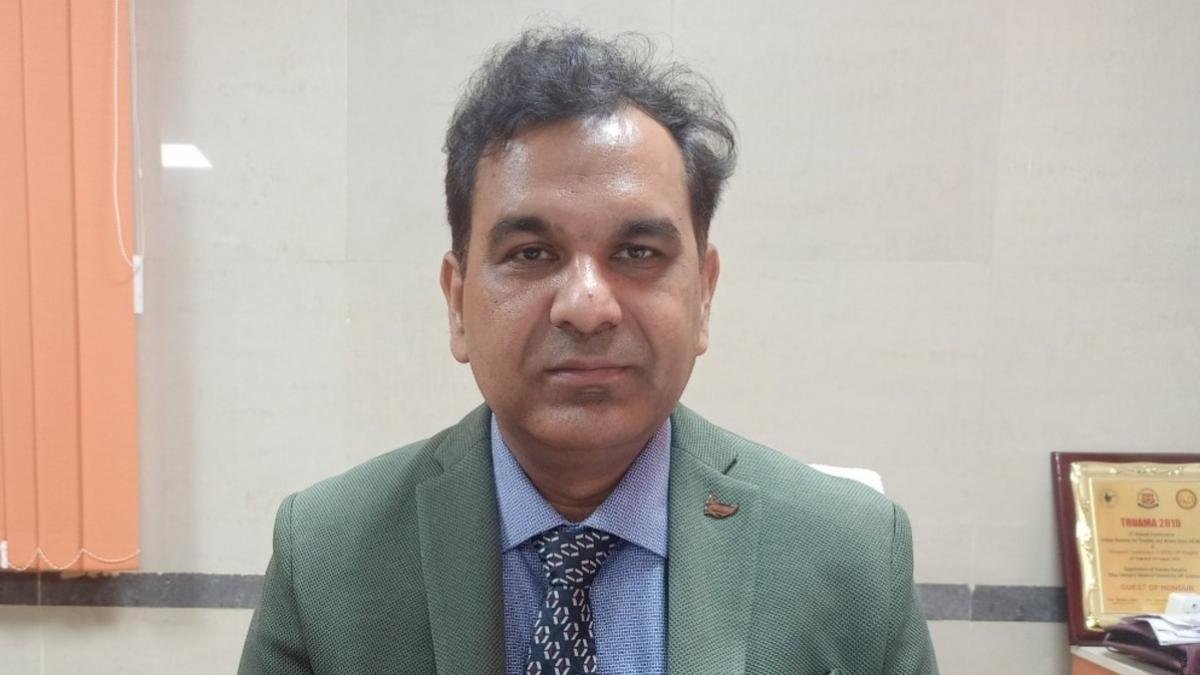Prof. (Dr.) Ved Prakash, Head of Department Pulmonary and Critical Care Medicine,KGMU, UP, Lucknow.
Lucknow: World Lung Cancer Day was established to bring global attention to the prevalence and impact of lung cancer. The day was first recognized in 2012 through a collaboration between the Forum of International Respiratory Societies (FIRS) and the International Association for the Study of Lung Cancer (IASLC). Since then, it has become an important global event celebrated annually on August 1.

Lung cancer is the second most common cancer worldwide, with 2.2 million new cases of lung cancer diagnosed worldwide in 2020. Breast cancer is the most common cancer worldwide. Lung cancer is the fourth most common cancer in India after breast, oral and cervical cancer.
Lung cancer is the leading cause of cancer-related deaths globally, with approximately 1.8 million people dying from lung cancer annually.
The primary cause of lung cancer is smoking, which contributes to approximately 85% of cases. Other factors include passive smoking, exposure to radon gas, asbestos and other environmental toxins, and genetic factors.
The 5-year survival rate for lung cancer varies according to the stage of cancer. For early-stage lung cancer, the 5-year survival rate is approximately 59%, while this rate drops to approximately 6% for advanced-stage lung cancer that has spread. CT scans can detect early-stage lung cancer.
About 10 to 15 percent of the total cases of lung cancer are non-smokers. Lung cancer is more common in men than women, but nowadays it is being seen that the rate of lung cancer is increasing in women as well, the main reason for which is the increasing rate of smoking among women in the last decades.
In the United States alone, the annual financial burden of lung cancer is estimated to be more than Rs 1640 thousand crores.
Symptoms of Lung Cancer
Patients of lung cancer may have symptoms like persistent cough, blood in cough, chest pain, difficulty in breathing, hoarseness, weight loss, loss of appetite, fatigue, frequent infections, swelling in the face or neck, bone pain, headache, etc.
Tests:
Imaging:– Chest X-ray, CT scan, PET scan (positron emission tomography)
MRI- In some cases, cancer can be detected by doing MRI of different parts to find out the spread of cancer.
Sputum test: Cancer cells are examined under a microscope in a sample of mucus taken from the lungs.

Biopsy: Bronchoscopy, Needle biopsy
Thoracentesis: Cancer can be detected by examining cancer cells in the fluid in the lung membrane.
Surgical biopsy: In some cases, cancer is diagnosed using a procedure such as thoracoscopy or thoracotomy to obtain a large tissue sample.
Molecular tests: Testing biopsy samples for specific genetic mutations or biomarkers (e.g., EGFR, ALK, KRAS) can help diagnose and treat cancer.
Blood tests: Newer blood tests, called liquid biopsies, can diagnose cancer by looking for genetic mutations in tumor DNA.
Once lung cancer is accurately diagnosed, various tests determine the stage and then decide whether to treat it, such as surgery, chemotherapy, etc.
Lung cancer treatment:
Treatment for lung cancer depends on several factors, including the type and stage of cancer as well as the patient’s overall health Surgery may be performed for early-stage lung cancer.
Radiation therapy: Used to target and kill cancer cells, often used when surgery is not an option.
Chemotherapy: Uses drugs to kill cancer cells, used for advanced stage lung cancer.
Targeted therapy: Used for certain types of lung cancer, usually for cancers with specific genetic mutations.
Immunotherapy: Uses the body’s immune system to fight cancer.









